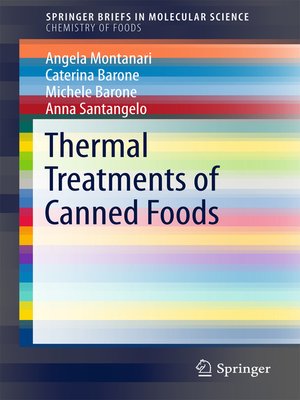
Sign up to save your library
With an OverDrive account, you can save your favorite libraries for at-a-glance information about availability. Find out more about OverDrive accounts.
Find this title in Libby, the library reading app by OverDrive.



Search for a digital library with this title
Title found at these libraries:
| Library Name | Distance |
|---|---|
| Loading... |
This Brief describes the chemical features of canned food products and gives background information on the technology of canning foods. It explains how canned foods are different from other packaged foods, and illustrates and discusses their unique properties, including risks and failures. Canned foods are usually considered to offer a particularly long shelf-life and durability. An understanding of their properties and influences on their durability is therefore of great importance in the industrial production, and this Brief offers a compact introduction to this topic.
The authors focus on thermally-preserved foods. They explain that the right choice of thermal treatment method (e.g. pasteurisation, sterilisation) as well as process parameters (e.g. time, temperature) is additionally influenced by criteria such as pH, water content, the presence and concentration of fatty molecules, of calcium, etc. So-called 'survival curves' can help in determining themethodology of choice, and the Brief introduces the reader to this concept. The authors also address defects and failures. They introduce selected indicators, which can help identifying failures of the entire food/packaging system, and demonstrate how image and visual analysis can be applied in quality controls. The explanations and industrial production of canned foods are exemplified with the case of canned tomato sauces and beans.
The authors focus on thermally-preserved foods. They explain that the right choice of thermal treatment method (e.g. pasteurisation, sterilisation) as well as process parameters (e.g. time, temperature) is additionally influenced by criteria such as pH, water content, the presence and concentration of fatty molecules, of calcium, etc. So-called 'survival curves' can help in determining themethodology of choice, and the Brief introduces the reader to this concept. The authors also address defects and failures. They introduce selected indicators, which can help identifying failures of the entire food/packaging system, and demonstrate how image and visual analysis can be applied in quality controls. The explanations and industrial production of canned foods are exemplified with the case of canned tomato sauces and beans.







